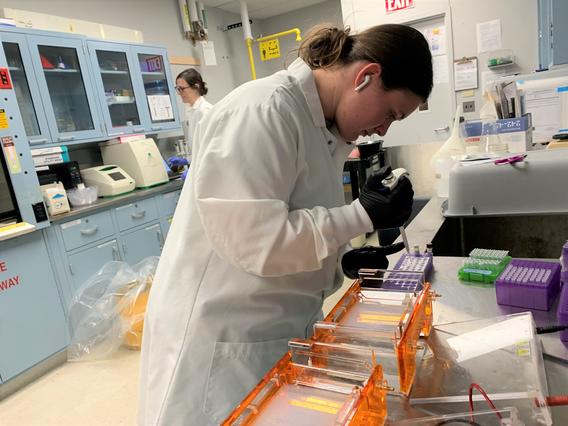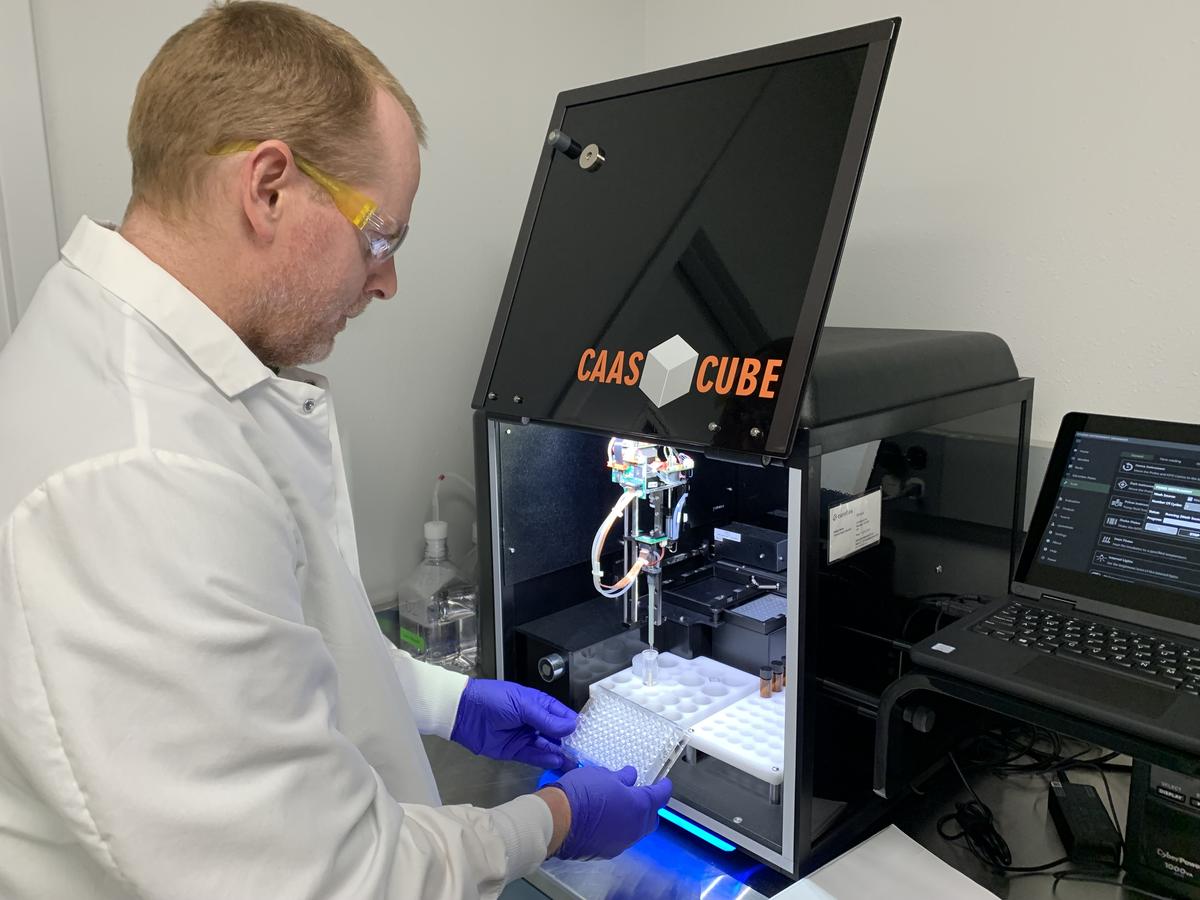Becoming a scientist requires years of rigorous study, countless hours of research and information synthesis.
And then, you get into the lab, white coat and safety glasses in place… and become an autotron? Those involved in water science know the drill. The monotonous, tedious process of “pipetting,” manually transferring water samples from one tube to another and slowly adding reagents.
In this case, we’re talking about an important process to determine the toxicity of cyanobacteria. With each press of the thumb on a plunger, scientists capture a sample one-twentieth of a milliliter. It’s then transferred from one tube and squirted into a 96-well micro-plate with reagents carefully added. It’s so repetitive that it can lead to analyst fatigue and error.
“A lot of labs don’t actually measure toxins in the water because it’s so hard,” explained Chris Filstrup, leader of NRRI’s Central Analytical Lab. “But it’s especially important to our work to better understand the toxicity of harmful algal blooms in our lakes.”

Enter ‘The Robot.’ This year NRRI invested in a Gold Standard Diagnostics CAAS Cube; basically, an automated pipetting machine. Its precision arm moves like a claw crane grabbing a toy, but instead smoothly moves from sample to reagent to the microplate.
And it works all night long without getting carpal tunnel.
“Now, we have the most advanced cyanobacterial monitoring system in the state,” Filstrup added, “and we can help agencies better inform the public about dangerous conditions."
It’s important because cyanobacteria is increasingly a “thing” in Minnesota lakes. The warming climate and excessive nutrients are producing these blooms, even far up in northern lakes and Lake Superior where advanced monitoring programs are still being established.
Automated hand, light work
The new unit is helping Filstrup and his team determine what conditions turn innocuous algal blooms into harmful algal blooms, toxic to people and pets. It can pipette a plate of 40 samples in 3-4 hours. It takes a human a full day to do that, with grinding monotony.
“When I previously did this manually, it would take me a full day to run one set of samples,” Filstrup explained. “And trying to train technicians and students to do this repetitive work was really hard. So our new robot eliminates waste and improves accuracy.”
The improvements will help his team develop a robust cyanobacteria monitoring program for inland lakes and Lake Superior. They’re engaged with agency partners to coordinate sample collections for both E. coli and cyanobacteria.
NRRI Support
Back in 2018, NRRI set up two internal teams to review and prioritize strategic expenditures, like the CAS Cube. The Technology Review Board is charged with driving research excellence via a peer review process. Scientists make their pitch for exploratory projects, new equipment or a significant change in process to ensure rigor and alignment with Institute priorities.
After the technology review, the board makes recommendations to NRRI’s Finance Review Board for final review and approval.
“The ‘Cube’ is a great tool for the Central Analytical Lab, but we can also recoup the money invested by contracting this service to agencies,” Filstrup said. “Our Technology Review Board recognized that cyanobacteria is an emerging issue for northern Minnesota, so NRRI is investing in solutions to this challenge.”
